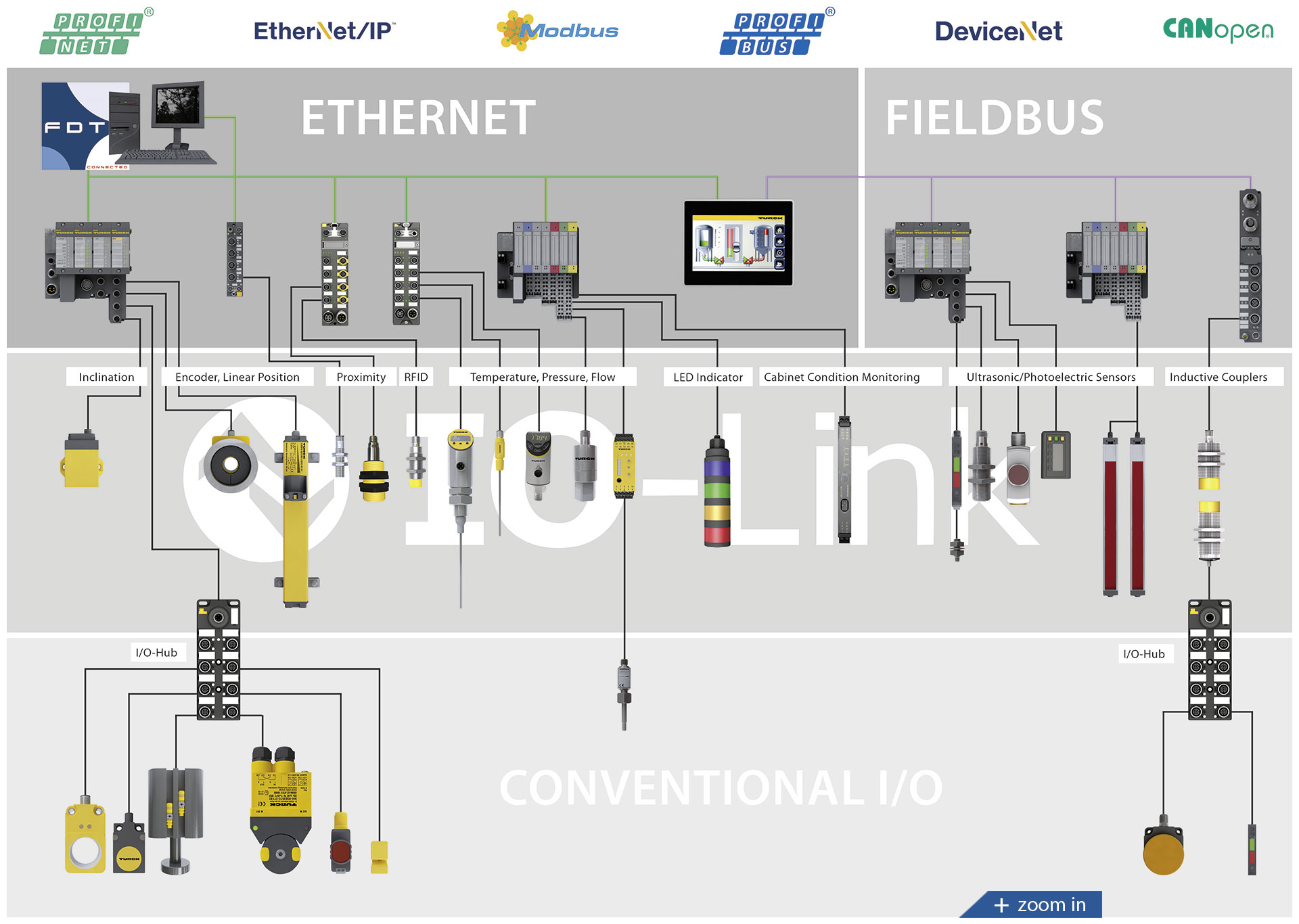
Profinet devices can be integrated into the engineering systems of controllers using their description
files. In this way, all devices and parameters of controller networks can be created, maintained from a
single system and saved. The system does not allow this in-depth integration for IO-Link devices.
Either manufacturer specific software is required for this configuration or a solution must be programmed via the controller – often involving considerable programming effort. SIDI from Turck now provides help here: The function in Turck's IO-Link masters enables IO-Link devices to be integrated directly in a Profinet engineering software such as the TIA Portal – allowing also the display of all device properties and plain text access to the device parameters.
Either manufacturer specific software is required for this configuration or a solution must be programmed via the controller – often involving considerable programming effort. SIDI from Turck now provides help here: The function in Turck's IO-Link masters enables IO-Link devices to be integrated directly in a Profinet engineering software such as the TIA Portal – allowing also the display of all device properties and plain text access to the device parameters.
Profinet devices can be integrated into the engineering systems of controllers using their description
files. In this way, all devices and parameters of controller networks can be created, maintained from a
single system and saved. The system does not allow this in-depth integration for IO-Link devices.
Either manufacturer specific software is required for this configuration or a solution must be programmed via the controller – often involving considerable programming effort. SIDI from Turck now provides help here: The function in Turck's IO-Link masters enables IO-Link devices to be integrated directly in a Profinet engineering software such as the TIA Portal – allowing also the display of all device properties and plain text access to the device parameters.
Either manufacturer specific software is required for this configuration or a solution must be programmed via the controller – often involving considerable programming effort. SIDI from Turck now provides help here: The function in Turck's IO-Link masters enables IO-Link devices to be integrated directly in a Profinet engineering software such as the TIA Portal – allowing also the display of all device properties and plain text access to the device parameters.

